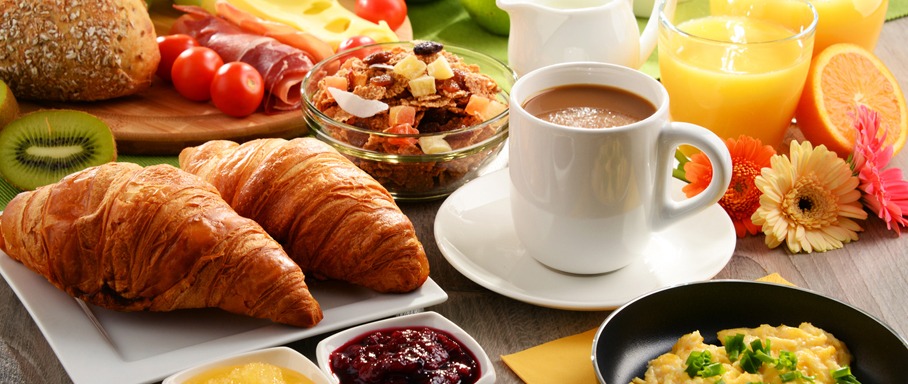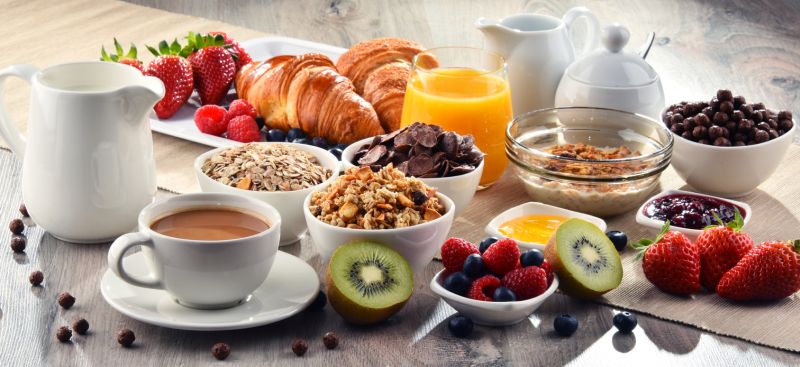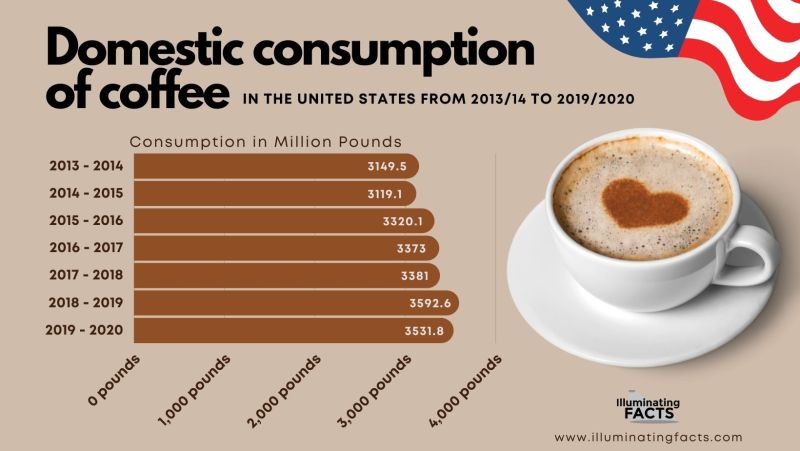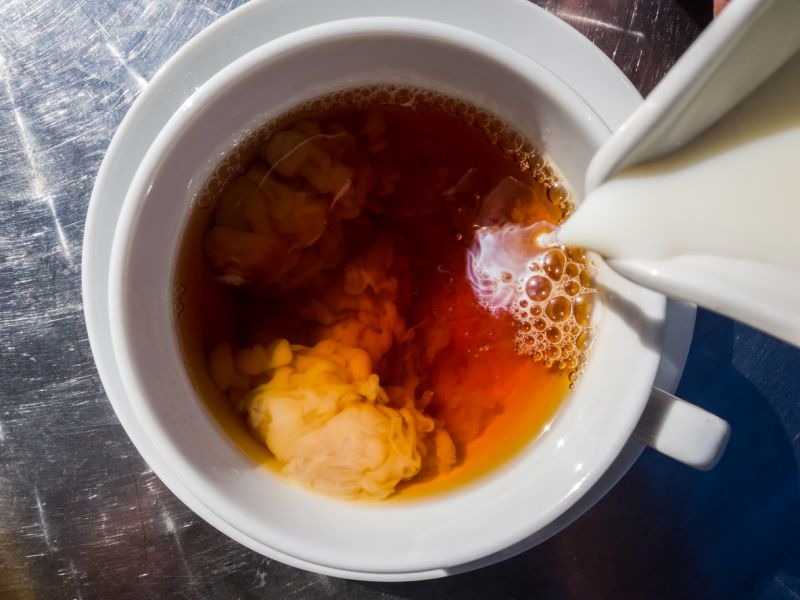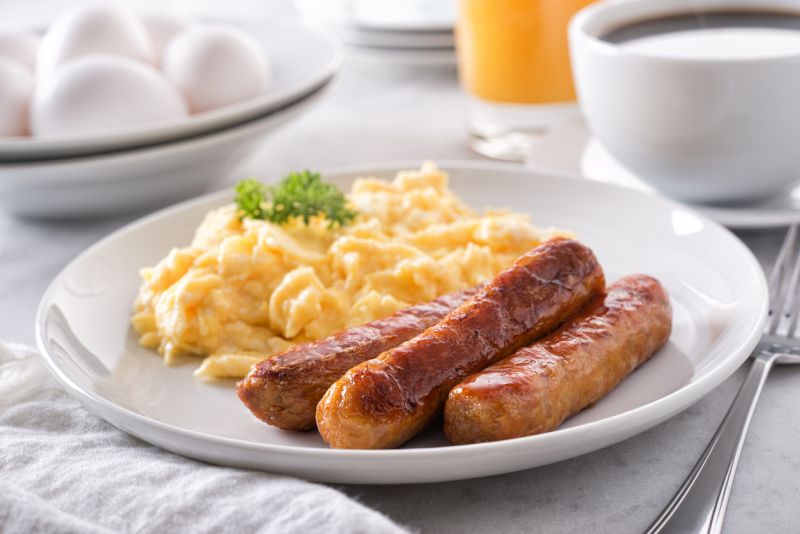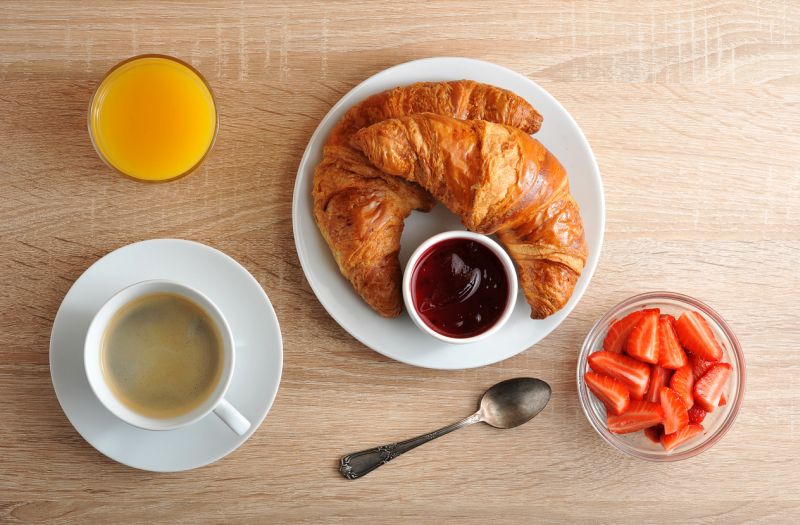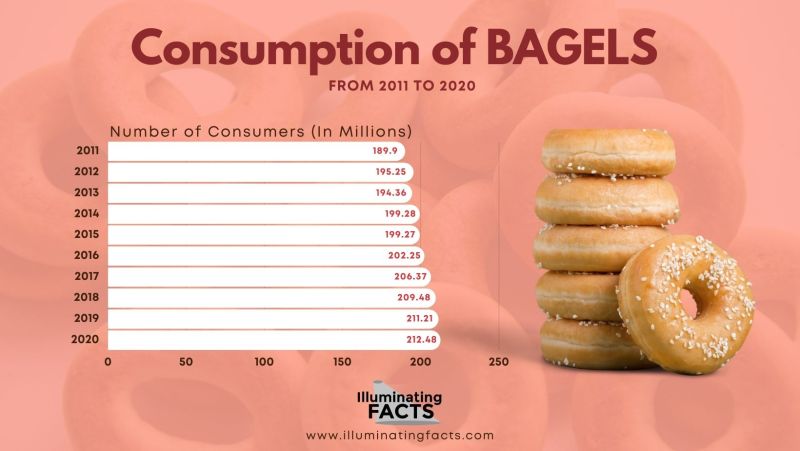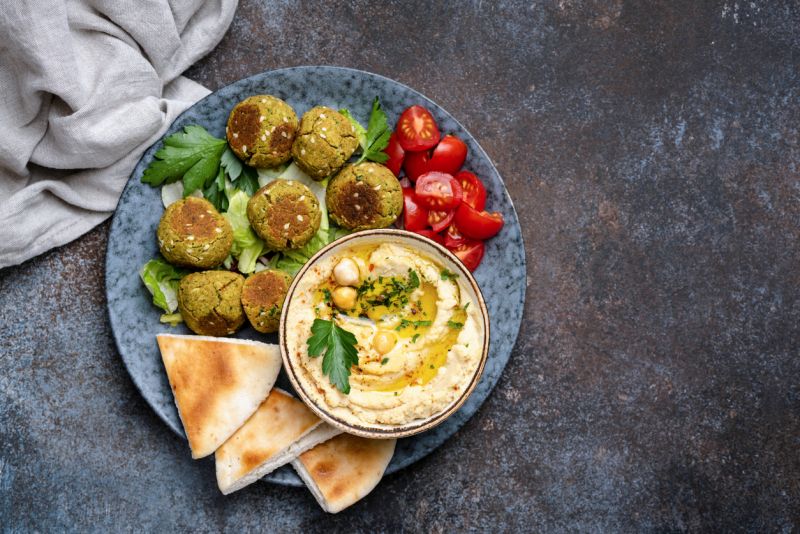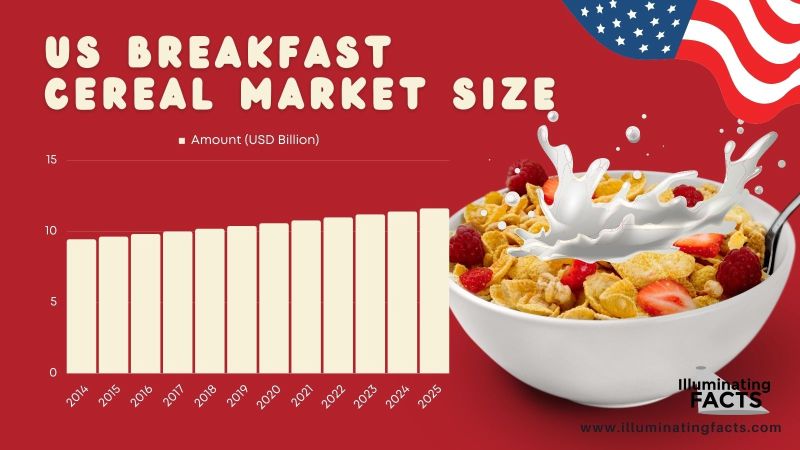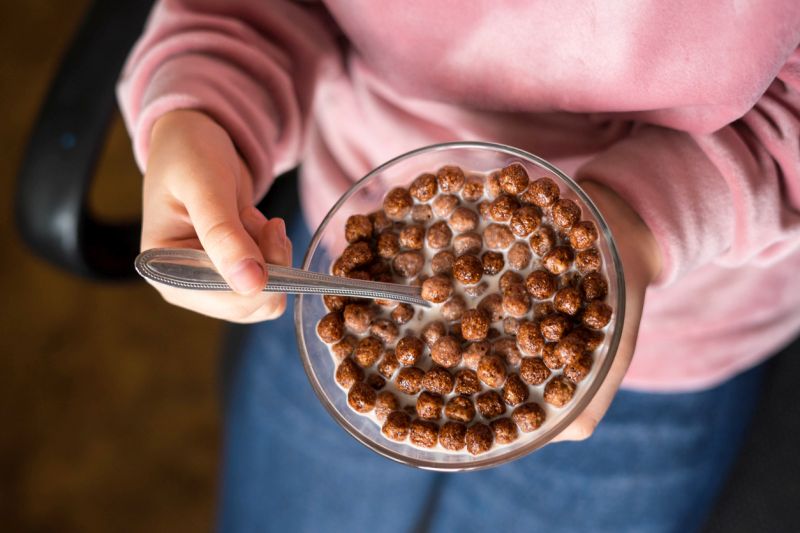Table of Contents
Breakfasts are the first thing to get in the morning. While many people have meat and full-scale meals at breakfast, others just get going with a cup of coffee. However, having an adequate breakfast is vital for human health in many ways. Historically, breakfasts haven’t been quite significant, but they are considered one of the most important meals of the day now for several reasons.
History of Breakfast
The tradition of eating a meal early in the morning has existed since ancient times. Although no particular name was given to this meal, it was still an eating habit that has existed for thousands of years. From the elite to the lower class of society, people have consumed any kind of meal in the morning for a fresh start to the day. In many Asian countries, the trend of having a major meal has existed for centuries. The Mughal emperors were known to have big feasts at every part of the day. Even the lower class people used to eat a “roti” made out of flour and an omelet which was quite sufficient.
By the 13th century, breakfast included small pieces of rye bread and some cheese while there was no inclusion of any kinds of fruits, vegetables, or meat. However, milk was sometimes consumed as well.
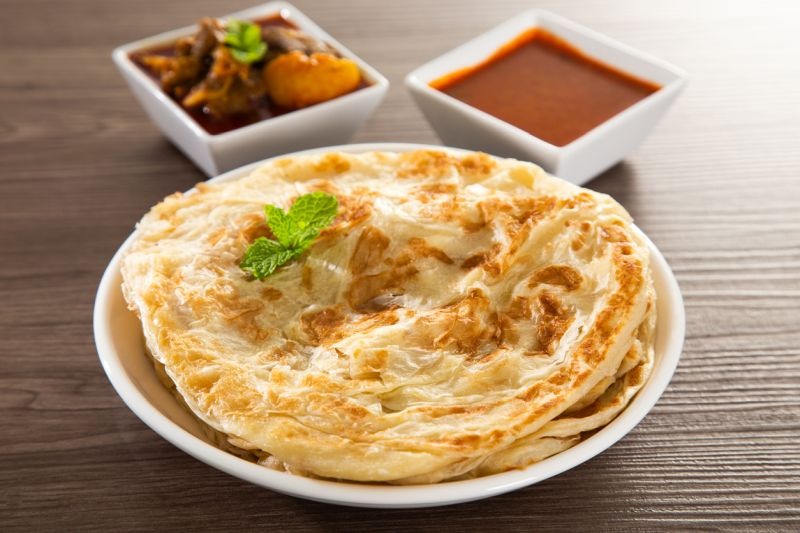
Parathas are a must-have in Indian breakfast
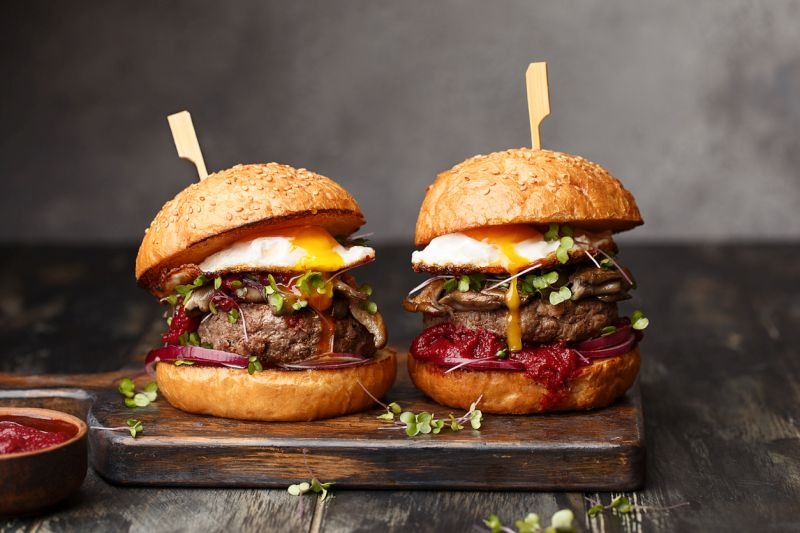
People eat more at a later time when they skip breakfast

Skipping breakfast could result in wrong eating habits

Two people eating breakfast
15th Century – 19th Century
In the 15th century, “breakfast” was first used to describe a morning meal. The word “breakfast” comes from the two different words “break” and “fast,” which means to break a long time of not having any meal, which was usually 8 hours of the night. In Old English, the morning meal was described as “morgenmete” which meant “morning food.”
However, the more distinctive act of eating something in the morning became common in the 19th century. Before this era, people did not consume much in the morning. A glass of milk was considered enough for the start of the day. However, since the 19th century, proper meals have been introduced in the morning. As a result, there were different types of distinctions too that were established in the breakfast. Americans invented their own type of breakfast after they saw that people in Great Britain were having their particular “English Breakfast.”
Similarly, other countries such as Asian countries, Italy, France, and China had their breakfast types. Moreover, during the mid-19th to the mid-20th century, there was an era of restaurants opening up in the morning and particularly offering breakfasts to the customers. France is one of the first countries to follow this practice as it introduced continental breakfast. By 1875, French Croissants were known to have been an essential part of the French Breakfast. Besides, the French breakfast also included pastries and “pain au chocolat.”
20th Century – Modern Day
By the 20th century, the concept of breakfast cereal had gained massive popularity. Many brands, such as Kelloggs, invented their own breakfast cereal. This included different types of cornflakes, and at times, oatmeal. The cereal became a favorite for the children in the beginning, but the adults later adopted this concept and decided to shift to breakfast cereal to start their day. As the morning cereal gained popularity, many different brands started to enter this industry and improve the product. This resulted in the creation of fruit pops or “fruity morning cereal.” The morning meals just became fruitier and tastier with the arrival of cereal.
Besides, coffee also started to get popular during the 20th century. Many restaurants which offered breakfast were now also providing coffee during this time. This, as result, became a culture in many countries as drinking coffee started to give people the extra boost they needed by the start of every morning before going to work. Coffee is said to have its consumption since the Industrial Revolution era and has been popular since then. Even today, coffee is one of the most popular drinks in the USA.
Source: Statista[10]
The graph shows that there is a fairly high consumption of coffee all over the United States. The 7-year trend analysis line shows that there has been an increase in the domestic consumption of coffee from 23.81 million 60-KG bags to 26.7 million 60-KG bags. Similarly, there has also been an increase in the overall coffee production in the USA. This shows that coffee is one of the most consumed beverages in the US, with most people drinking it in the morning and some people consuming coffee occasionally in the evening.
The Arrival of Tea
It may come to you as a surprise, but tea made its way to the breakfast table quite late. People in the Asian culture have been consuming tea for breakfast for centuries. However, other cultures, such as England and America, had the idea of tea in the late 19th to the early 20th century. English Breakfast included special English Tea, creating a unique breakfast blend. Tea was consumed with cookies or bread, which was a perfect breakfast as it was neither too heavy nor too light.
From the late 20th century to the early 21st century, breakfast items included pancakes and waffles. While pancakes have stayed popular all over the USA, waffles have been a popular delight in the United Kingdom. Today, breakfast tables have all kinds of delicacies on them. People also eat different types of meat and sausages for breakfast, but that isn’t a very popular choice as meat is expensive for breakfast. Besides, many people believe that they don’t have time for breakfast which is why they don’t get to have an adequate one.
Types of Breakfast
English Breakfast
Also known as fry-up, Full English breakfast is common and extremely popular in the UK and Ireland. It contains several ingredients with key components: meat, fried bread, eggs, sausages, mushrooms, tomatoes, and beans. Black or white pudding is optional in English but necessary in Irish breakfast.
This warm and salty breakfast is a wonderful morning treat. However, a full English breakfast cannot be considered healthy due to possessing high amounts of fats and calories. The body cannot use these calories, which contribute to weight gain.
Weight gain can be reduced by eating smaller portions and changing to low-fat oils. Full English breakfast is not to be eaten every day and is usually only eaten on lazy weekends, as there are serious health repercussions on daily intake.
A traditional English breakfast contains 807 calories, 63g fat, 18g saturated fat, and 4.52g salt. Fats can be further reduced by using low-fat oils.
| All You Need to Know About English Breakfast | |
| Items | Quantity |
| Meat Sausages. | -As per requirement, usually 4. |
| Fried Bread. | -2 slices of white bread fried with butter or oil. |
| Butter. | – As per requirement. |
| Eggs. | -2-4 sunny-side-up fried eggs. |
| Beans. | -1 cup (136 grams) British baked beans. |
| Tomatoes. | -2 tomatoes sliced fried with salt and pepper. |
| Mushrooms. | -6 ounces (170 grams) mushrooms. |
| Black pudding. | -2 slices black pudding. |
| Orange Juice | – 1 Cup |
| Baked Beans | – 1 Bowl |
American Breakfast
A traditional North American breakfast comprises an omelet of beaten eggs or egg whites with milk or cream, a type of meat for protein; usually, these are sausages or chicken. Potatoes as either hash browns or fries, Toast or other baked items, any fruit on a separate plate or the corner, and a glass of Orange juices or a cup of coffee.
American breakfast has many variants, and more are being included every few years as new baked items and breakfast combinations are gaining popularity.
Breakfast in America is not very healthy as it can have processed foods like waffles and cereals, which contain a lot of sugar. In addition, it also includes fried items that have a high fat content.
Calories can vary with the slightest changes, but this is a rough estimate of the breakfast with the above-mentioned items. The nutritional value for 1 serving of basic American Breakfast is 1210 calories, 30g Saturated fat, 60g fat, and 10g sugar.
| All You Need to Know About American Breakfast | |
| Items | Quantity |
| -Eggs | -Omelet of 2 eggs or 2 sunny-side-up eggs |
| -Meat | -3-4 slices of meat stripes. |
| -Baked goods | -2 Toast or 2-3 muffins |
| – Bread | – Usually 2 slices |
| -Brown hush or fries | -2 pieces of brown hush or 300-500g fries |
| -Any fruit | -As per the requirement |
| -Orange juice | -A freshly squeezed glass or from a packed bottle |
Italian Breakfast
Italian breakfast (prima colazione) consists of a caffè latte, coffee with bread (Fette biscottate), or a croissant. Children drink hot milk with little or no coffee.
Italian breakfast is sweet, light, and just enough to get you kick-started for the day. It consists of a caffeinated drink for morning energy and a baked item to provide the required sugar. Slices of bread are a healthier option, whereas croissants have a lot of cholesterol.
Italian breakfast is small and not considered the main meal of the day. It is eaten fairly quickly to move on with the day and is followed by a nutritional lunch later in the day. Besides, this breakfast has two main components, a baked item and coffee. The breakfast keeps evolving into numerous variants due to new types of coffees and baked items being introduced to the market.
Source: Brooklyn Food Group [12]
The following graph shows the consumption of bagels from 2011 to 2020. It is a slow but positive trend as consumption increased from 189.9 million to 212.48 million consumers between 2011 and 2020. The positive trend indicates that bagels are one of the most popular breakfasts in America and other countries. We can expect that this number will reach 218 million consumers by 2025.
The breakfast is very cheap and can be ordered at almost every café. Making it at home is very cost-effective, easy, and fast too. You can make a fresh cup of coffee or make instant coffee. The choice between buying pre-made baked goods, and baking, is also yours.
An average serving of Italian breakfast has 400 calories, 23g fat, 9g saturated fats, 27g carbohydrates, and 17g protein.
| All You Need to Know About Italian Breakfast | |
| Items | Quantity |
| -Coffee | -Caffè latte is the most common, while any coffee as per choice. |
| -Baked goods | -A slice of cake/ jam bread/ croissant or Fette biscottate (a type of biscuit). |
Continental Breakfast
The term “continental breakfast” originated in Britain in the mid-19th century. To the British, “the continent” refers to the countries of mainland Europe. Thus the common breakfast in mainland Europe came to be known as Continental Breakfast.
Continental Breakfast is light, typically consisting of pastries/baked goods, fruits, toast, coffee, or hot chocolate. It is usually served in European hotels but is also homemade.
Rather than a large breakfast with eggs and meat, a continental breakfast focuses on the satisfaction of eating and not feeling overly full. Continental breakfast can be served because nothing has to be fried or heated. Coffee or a warm glass of milk are the only things that require heating. This makes it easy to assemble if you’re short on time. Continental Breakfast is inexpensive, can be made easily, and the required items are very easy to acquire.
Per serving, it has an average of 570 calories, 16g fats, 8g saturated fats, 91g carbohydrates, and 10g protein. This varies with different baked items.
| All You Need to Know About Continental Breakfast | |
| Items | Quantity |
| -Baked goods | -2 pieces of pastries or a slice of cake, etc |
| -Fruits | -As per the requirement |
| -Toast | -2 pieces |
| -Cereal | -1 Bowl |
| -Coffee/Hot chocolate | -1 cup |
Middle Eastern Breakfast
Middle Eastern breakfast is often confused with Arabian breakfast, but there is a big difference. Middle Eastern breakfast is a large, hearty meal with various dishes being served simultaneously, while Arabian Breakfast has only 2-3 dishes at most.
Unlike the European breakfast mentioned above, Middle Eastern breakfasts are unique, as they usually consist of multiple dishes.
Common sets are:
-Falafel, fool, and hummus with pita bread and tea.
-Homemade staples like labneh, nabulsi cheese, jams, zaatar, dukkah, and olive oil.
-Wraps, sandwiches, and manakeesh.
Middle Eastern breakfast is not very healthy but can be safely eaten daily by switching variants. While it may not pose a threat to the natives, it can be very heavy for foreigners to start the day.
If falafel is served, the breakfast is heavier as falafel is deep-fried in oil.
A minimum average serving of Middle eastern breakfast has an estimated 238 calories, 13g carbohydrates, 14g fats, and 14g proteins. A very reliable estimate is hard to find as Middle Eastern breakfasts have hundreds of variants and almost unlimited potential to be altered nutritionally.
| All You Need to Know About Middle Eastern Breakfast | |
| Items | Quality |
| Tea | -A single cup is enough after eating. |
| Baked goods | -3 pieces of Pita bread or any other substitute. |
| Accessory | -Anything that fits the set (Cheese, jam, olive oil, fool, hummus, zaatar, etc.). |
| The main dish | -Falafel, falafel roll, Persian omelet, etc. |
| A side dish | -Sandwiches, manakish, etc. |
Japanese Breakfast
When we say Japanese breakfast, we are referring to the traditional Japanese breakfast, with a combination of grain, healthy omega-rich proteins, pickles, and umami flavors. Japanese breakfast is a wholesome breakfast that satisfies and energizes you and is very healthy as it is an all-rounded balanced set.
Warm rice, salted salmon, miso soup, and seaweed complete a traditional Japanese breakfast.
Although there are opportunities for variances, the core concept of “ichiju sansai” stays the same. The concept focuses on providing a hearty meal that provides essential nutrients and energy but doesn’t weigh one down. Ichiju sansai is the foundation of every Japanese breakfast that consists of one soup, three dishes, and rice. Stir-fried or pickled vegetables are used as side dishes.
The rice is steamed, and Salmon is used due to being protein-rich, while an egg dish may also be present.
Japanese breakfast is a complete package with a balanced amount of every nutrient. Each serving of a complete Japanese breakfast contains an average of 457 calories, 30g fats, 12g carbohydrates, and 36g proteins.
| All You Need to Know About Japanese Breakfast | |
| Items | Quantity |
| Rice. | -1 cup Steamed Rice. |
| Miso soup. | -Add 4-6 pieces of tofu, wakame seaweed, mushrooms, and green onions. |
| Grilled fish or Egg dish. | -Salted salmon/ grilled mackerel or omelet rolls. |
| Vegetable side dish or pickled. | -1 small half-filled bowl of either. |
| Seasoned seaweed. | -Purchase a small amount as it gets stale fast, it is a staple for the breakfast menu. |
Chinese Breakfast
Chinese breakfast varies largely, with everyone preferring different combinations. In addition, breakfast, in general, isn’t considered very important in China.
Chinese people usually drink soybean milk or eat deep-fried dough sticks, steamed buns, tofu pudding, wheat noodles, or rice noodles for breakfast.
With its huge population, China has many cultures and traditions, so even breakfast differs across China. Here, we will break down China into North and South China because the variation between these two is the highest. Breakfast eaten and served in North China is mainly steamed buns, fried dough sticks, rice porridge, zhongzi, tofu pudding, wheat noodles, pancakes, and eggs.
While breakfast commonly eaten in South China is yam cha/morning tea, zhongzi, rice noodles, tofu pudding, and wontons.
One of the best Chinese breakfast combinations is soy milk, rice porridge, and youtiao (fried dough stick). Steamed buns and tofu pudding also make an amazing combination, even better when eaten in winter.
According to the USDA, a single medium steamed dumpling weighing 37 grams contains 41.8 calories, 1.7 g fat, 4.1 g carbohydrate, 0.4 g fiber, 0.9 g sugar, and 2.5 g protein
| All You Need to Know About Chinese Breakfast | |
| Items | Quantity |
| -Steamed buns or soy milk | – 10-20 dumplings or a full glass of soy milk |
| -Tofu pudding or youtiao | -1 full bowl 4-6 pieces of tofu or 4 sticks of youtiao |
Indian Breakfast
Indian diets are unhealthy. Indians consume excessive amounts of cereals and not enough proteins, fruits, and vegetables.
However, unlike in many other countries, excess consumption of animal protein is not a problem in India. Due to their culture, most Indians prefer vegetables over meat. Indian breakfast is very healthy, but people are deviating from the traditional breakfast, and most eat cereal to start the day.
In traditional, authentic Indian Breakfast, Palak pooris, Masala omelets, Oats, idli, Multigrain parathas, Besan cheela, Idli sambhar, Chana dal, and Beetroot dosa are some of the healthiest options.
Many Indians eat a variant of pancake named dosas and uttapams. This is a filled pancake, and the variation in filling has given birth to many different versions. Pakoda, Kachori, and samosas are famous breakfasts but don’t provide many health benefits as they are all fried items.
While there are thousands upon thousands of combinations, one of the most iconic ones is a masala omelet and paratha. Almost every person in India has this at least once a week.
| All You Need to Know About Indian Breakfast | |
| Items | Quantity |
| Masala Omelette | -2 beat eggs perfectly seasoned with Indian spices and pan-fried. |
| Parathas | -Depends on a person’s appetite. A person usually has about 1-2 parathas. |
| Tea | A cup of tea to wash the breakfast down. |
All You Need to Know About the Different Types of Breakfasts | ||||
Type of Breakfast | Estimated Cost | Impact on Health | Time Required to Eat | Estimated Nutritional Value |
English Breakfast | Moderate | Extremely harmful Contains a lot of cholesterol. Can lead to heart disease. | 25-40 mins | - 807 calories - 63g fat - 18g saturated fat - 4.52g salt |
American Breakfast | Moderate | Extremely harmful. A lot of fried items aren't good for your health. Contain no vegetables or lighter alternatives. | 25-40 mins | - 1210 calories - 30g Saturated fat - 60g fat - 10g sugar. |
Italian Breakfast | Very low | Very light, but not healthy. Croissants contain a lot of butter. Eating them regularly can cause serious health repercussions. | 5-10 mins | - 400 calories - 23g fats - 9g saturated fats - 27g carbohydrates - 17g protein. |
Continental Breakfast | Very low | Not healthy, but not extremely harmful. Breakfast has a lot of calories, and consuming them regularly can cause obesity. High cholesterol content too. | 5-10 mins | - 570 calories - 16g fats - 8g saturated fats - 91g carbohydrates - 10g protein Varies between different baked goods |
Middle Eastern breakfast | High | Heavy but not harmful depending on items. You can make a healthy breakfast by including a lot of vegetables, and other healthy options. | 30-50 mins | - 238 Calories - 13g Carbohydrates - 14g Fats - 14g Proteins |
Japanese Breakfast | High | Very healthy. The breakfast contains rice which is the primary source of starch. The fish is an excellent source of protein, omega 3, and other nutrients. The vegetables provide a lot of vitamins and minerals. | 30-40 mins | - 457 calories - 30g fats - 12g carbohydrates - 36g proteins. |
Chinese Breakfast | Low to Moderate | Depends upon combinations. | 20-40 mins | Nutritional value of a dumpling- - 41.8 calories - 1.7 g fat - 4.1 g carbohydrate - 0.4 g fiber - 0.9 g sugar - 2.5 g protein |
Indian Breakfast | Omelette and Paratha 50-100 Indian rupees Prices for other breakfast combinations vary but are not very high. | Not very healthy. The eggs are good for you because they are an excellent source of protein. The parathas are made in ghee, which contains a lot of cholesterol. Eating a lot of parathas can cause health concerns over time. | 30-40 mins | Omelete- - 4 g carbohydrates - 2 g Sugar - 10 g Fat - 724 mg sodium - 422 mg cholesterol |
Breakfast In Numbers
America’s Top Favorite Breakfast Food Items
Source: NyPost[2]
The above graph highlights the top breakfast items consumed within the USA as of 2019. The graph shows that US citizens prefer Eggs, Sausage, Toast, and Pancakes, followed by other items. These four have shown 58.18%, 46.72%, 46.57%, and 44.12% favorable US trends, respectively. The other items are not very common. One thing which can be implied from this is that the USA is one of those countries which has a high proportion of people consuming healthy breakfast items.
US Breakfast Cereal Market Size 2014 – 2025
Source: Grand View Research [3]
From the above graph, it is quite clear that the USA is one of the biggest markets as far as cereals are concerned. Since 2014, a constantly positive trend has been seen in the market. It was at $9.42 billion in 2014 and extended up to $10.55 billion as of 2020. 6 years brought more than $1 billion in terms of market growth for the Cereal market. This shows that cereals are one of the most consumed meals in the US. Forecast data shows that the US Breakfast Cereal Market is expected to grow even further by 2% per annum.
Global Breakfast Cereal Market (2013 – 2023)
Source: Agri Exchange [11]
The above graph shows that there has been a significant increase in the market size for breakfast cereal. This implies that breakfast cereal is becoming more popular globally as a choice of breakfast compared to the other types of foods. Even the Asian economies are now consuming more breakfast cereal which has led to a growth in the market size. As of 2013, the market size for breakfast cereal was $8.31 million, which has increased to $11.43 million by 2020 and is expected to increase at a Cumulative Annual Growth Rate of 4.3%. As a result, it could reach $12.52 million based on the study forecasts.
Benefits of Breakfast
For several reasons, breakfast is considered the most important meal of the day.
Energy
When a person has slept for about 8 to 10 hours at night, he has burned quite a lot of calories. The stomach is empty, and the human body is in a dire need of extra energy to function properly throughout the day. Breakfast is important because it helps provide the essential energy and nutrients to the body. After a night’s sleep, the glycogen levels in the body are reduced, and eating a healthy breakfast helps raise the glycogen levels. A healthy breakfast will also ensure that your metabolism improves significantly in the body.
Boosts Brain Power
People often feel restless at work, and one reason is that they haven’t had a proper breakfast. Eating a healthy breakfast every morning increases glucose levels in the body, enhancing brain power. It will also help you maintain attention at work while having an improved memory as well. Students are usually recommended to never skip breakfasts as it deteriorates their academic performance.
Flushes Out Toxins from the Body
Healthy morning breakfasts such as fresh juices help eliminate toxins from the body. The benefits of morning juice include reduced constipation and detoxification from the body. The detoxifying effect occurs due to a variety of minerals and nutrients available in almost all types of fresh juices.
Helps Control Diabetes
According to a few studies, people who have a healthy breakfast in the morning are less likely to suffer from the problem of Type II Diabetes. One reason for this is that breakfast helps fulfill the body’s basic sugar requirements at the start of the day. Moreover, having breakfast also reduces the risk of various forms of cardiovascular diseases.
Lowers the Weight
Although breakfast is a regular habit of eating up early in the morning, it could result in a lower weight and reduced risk of going obese. There are several reasons for that. Primarily, when the body is fueled with vital health nutrients and vitamins, it helps the body in becoming more functional and physically active from the start of the day. Research at Cornell University has also supported this claim and shown that people who eat breakfast do not overeat at later meals, which helps them reduce overall weight and lower chances of getting obese[1].
Disadvantages of Skipping Breakfast
Various health professionals have advised against skipping breakfast for several reasons.
Results in Overeating
Most people who eat breakfast have a very light meal in the morning. It is either 2 to 3 slices of bread and a glass of juice or milk. Others prefer baked beans, cereal, coffee, and other items, none containing high amounts of calories. However, eating this low-calorie meal results in less consumption later in the day.
In case a person misses out on their breakfast, they will eat more at a later time. For example, skipping a low-calorie meal at breakfast may result in overconsumption of a high-calorie meal at lunchtime. As a result of this, instead of saving up on calories by missing out on breakfast, many people end up over-consuming. Therefore, skipping breakfast results in an increased risk of obesity.
Stressful Day
The body is in dire need of vital nutrients and minerals at the start of every day. The 8 to 10 hours of no-meal intake demands a food intake to balance it all out. However, those who skip breakfast tend to have a stressful day as their body does not feel comfortable. They are most likely to suffer from reduced energy levels as well as they might get cranky. This could result in having a stressful day, particularly when you are at work.
Results in Wrong Eating Habits
Most people who have breakfasts eat something healthy. Items such as fruit juice, milk, egg, bread, butter, jam, beans, and other contents of breakfast are usually those which have essential vitamins and minerals that are needed by the body. Once you miss out on breakfast, you may eat something unhealthy such as a burger or pasta at lunchtime. This would result in massive fat accumulation and junk eating habits. Consistently skipping out on breakfast could make these wrong eating habits into more permanent ones.
Based on the graph, it can be seen that the problem of skipping breakfast does not only reside among the youth but also in the more elderly age group. From the survey, it has been found that about 16.73% of youth between 16 and 24 are skipping breakfast, followed by the age group of 45 – 54, which is 14%. This also implies that both age groups have unhealthy eating habits as they are most likely to overconsume fast food and other such items later in the day.
Interesting Facts About Breakfast
- The USA is among those countries where breakfast is the most skipped meal for the day. One study has shown that about 58% of Americans don’t have breakfast every day. The main reason is rush hour in the morning, which causes delays for people going to work, which is why they skip breakfast in the hope of reaching the workplace quickly.
- A funny world record concerning breakfasts was set in Sydney where most people ate their breakfast in bed. In 2012, 289 people got into only 85 queen size beds to enjoy their breakfast – right there in the bed!
- Cold sandwiches are one of the most eaten breakfast meals.
- In the United Kingdom and Australia, extracts from Yeast called Marmite and Vegemite are popular spreads used on toast slices.
- The largest breakfast in the world was held in Germany in 2005. 27,854 participants set up this record.
- The month of February is considered the “National Hot Breakfast Month.”
- 25th September is known as the “Better Breakfast Day”.
- One study has shown that Americans consume over 160 bowls of cereal yearly, most of which are in the morning.
- Traditional Turkish breakfast has bread as its primary component. Due to this, Turkey has become the world’s biggest bread-consuming country with per capita consumption at over 199Kg.
- Most breakfasts include meals that have a high carbohydrate content in them. This helps in the creation of essential fatty acids for the body and helps us keep going through the day.
- Aristocrats in the UK were once known for their royal breakfasts. During the 19th century, they used to have about 24 different types of dishes at breakfasts.
- China has the highest consumption of eggs per capita. It becomes over 22.9kg worth of eggs per year per citizen, most of which is consumed during breakfast.
- Morocco is the highest cereal-consuming country in the world, according to one study conducted in 2013.
- Mexican breakfasts are one of the spiciest breakfasts in the world.
- It’s funny that Costa Rican people drink sugar water for breakfast. The special “agua dulce” literally means sweet water and this has been a popular breakfast for quite many years.
- The West End’s Breakfast at Tiffany’s opening is considered the most expensive breakfast in the world. It cost the participants a whopping amount of $37,000 where the feast was hosted by French Liqueur, and the breakfast consisted of different types of croissants covered with edible gold and jewels. There were various kinds of Champagne, top-of-the-line Kopi Luwak Coffee, and other rare items, all of which were covered with numerous pearls and diamonds.
- The largest-ever cereal breakfast was held in Lebanon by the Daher International Food Company, in which there were 1,852 participants.
- The first moon landing also has a deep connection with the breakfast cereal. Astronauts aboard Apollo 11, the first-ever mission from Earth to Moon, ate Kellogg’s Corn Flakes.
- About 50 billion bananas are eaten every year at breakfast time. This accounts for 50% of the total bananas eaten all over the world every year.
- The world’s first-ever cereal was invented in 1863. It was so hard that it had to be soaked overnight so people could chew it. Today, even without soaking, people can easily consume cereals of all kinds.
- For over 7 years, Honey Nut Cheerios has been the #1 cereal in the United States.
- One of the weirdest reasons why someone would leave breakfast is because they have to get ready. Surprisingly, 29% of women who skip breakfast prefer getting dressed up over having a proper breakfast.
- The world record was set for the largest bowl of porridge, weighing over 1907 lbs. This record was made on 10th September, 2011.
- During World War II, the concept of cooked breakfast almost diminished. Due to the ongoing war, many items, such as eggs, were scarce. As a result, people only depended on raw food items.
- Trends in breakfast have changed quite fast. In 1956, 50% of adults and children used to have some form of breakfast. However, by 1976, only 20% had a cooked breakfast.
- Yoghurt is becoming an increasingly popular form of breakfast in the USA and other parts of the world.
- If you don’t want to eat a heavy breakfast, simply get some chocolate or any other dessert item. They are high in carbohydrates making them an ideal breakfast. However, don’t keep this practice for a long term.
- Scrambled eggs are considered to be the best breakfast in the world.
- Breakfast is considered the only meal of the day where eating more helps you lose weight as most people immediately get to work and burn many calories.
- You should avoid the following items in your breakfast – Cereal Bars, Coffee with Syrup, Sugary Cereal, and Flavored Porridge.
Conclusion
Breakfast is definitely one of the most important meals of the day. However, it is alarming to know that over 58% of Americans are skipping their breakfast. This could have several negative follow-on consequences as a long range of unhealthy eating habits develop. We recommend that everyone consume breakfast, even if it is a light one. This will help in achieving various vital health benefits as well.
References
- The Benefits of Eating Breakfast (2021). Retrieved 5 November 2021, from https://www.webmd.com/diet/features/many-benefits-breakfast#2
- More than half of Americans want ‘second breakfast’ to officially be a thing. (2019). Retrieved 9 December 2021, from https://nypost.com/2019/09/06/more-than-half-of-americans-want-second-breakfast-to-officially-be-a-thing/
- Breakfast Cereal Market Size, Share | Industry Trend Report 2018-2025. (2021). Retrieved 5 November 2021, from https://www.grandviewresearch.com/industry-analysis/breakfast-cereals-market
- Infographic: What Hard Brexit Means for British Breakfasts. (2021). Retrieved 6 November 2021, from https://www.statista.com/chart/10204/what-hard-brexit-means-for-british-breakfasts/
- U.S.: usage of bread 2011-2024 | Statista. (2021). Retrieved 6 November 2021, from https://www.statista.com/statistics/281971/us-households-usage-of-bread-trend/
- Breakfast cereals and cereal bar UK import value 2001-2020 | Statista. (2021). Retrieved 6 November 2021, from https://www.statista.com/statistics/520161/breakfast-and-cereal-bars-import-value-united-kingdom-uk/
- Japan: cornflakes shipment volume 2020 | Statista. (2021). Retrieved 6 November 2021, from https://www.statista.com/statistics/710989/japan-cornflakes-shipping-volume/
- Breakfast Statistics 2021 – What we Eat and How Often We Skip It. (2021). Retrieved 6 November 2021, from https://www.lakeland-furniture.co.uk/blog/breakfast-statistics
- Individuals having an adequate breakfast Italy 2019 | Statista. (2020). Retrieved 6 November 2021, from https://www.statista.com/statistics/568324/individuals-adequate-breakfast-italy-by-age/
- Coffee consumption U.S. 2013 – 2020 | Statista. (2021). Retrieved 7 November 2021, from https://www.statista.com/statistics/804271/domestic-coffee-consumption-in-the-us/
- The Global Breakfast Cereal Market Size | 2013 – 2023. (2021). Retrieved 7 November 2021, from https://agriexchange.apeda.gov.in/Weekly_eReport/Cereal_Preparations_Report.pdf
- Overall Bagel Category. (2021). Retrieved 11 January 2022, from http://www.brooklynfoodgroup.com/documents/Overall_Bagel_Category_by_Brand.pdf

